You can quickly calm your anxiety with these five powerful breathing techniques. The 4-7-8 method, developed by Dr. Andrew Weil, involves a specific inhale-hold-exhale pattern. Box breathing uses a 4-count square rhythm to promote calmness. Diaphragmatic breathing engages your belly for deep, relaxing breaths. Alternate nostril breathing, an ancient yoga practice, balances your nervous system. Counted breath focuses your mind with a 4:2:6:2 ratio. Each technique regulates your breath, slows your heart rate, and shifts attention away from anxious thoughts. By incorporating these simple practices into your daily routine, you'll discover effective tools to manage stress and find inner peace.
Key Takeaways
- 4-7-8 Breathing Method reduces anxiety by increasing oxygen, slowing heart rate, and redirecting focus from anxious thoughts.
- Box Breathing regulates breath and activates the parasympathetic nervous system, promoting calmness during stressful situations.
- Diaphragmatic Breathing engages the diaphragm for deep breaths, activating the relaxation response and lowering heart rate.
- Alternate Nostril Breathing balances the nervous system, reduces stress, and improves lung function.
- Counted Breath technique creates a rhythmic pattern that steadies the mind and body, redirecting attention from anxious thoughts.
The 4-7-8 Breathing Method
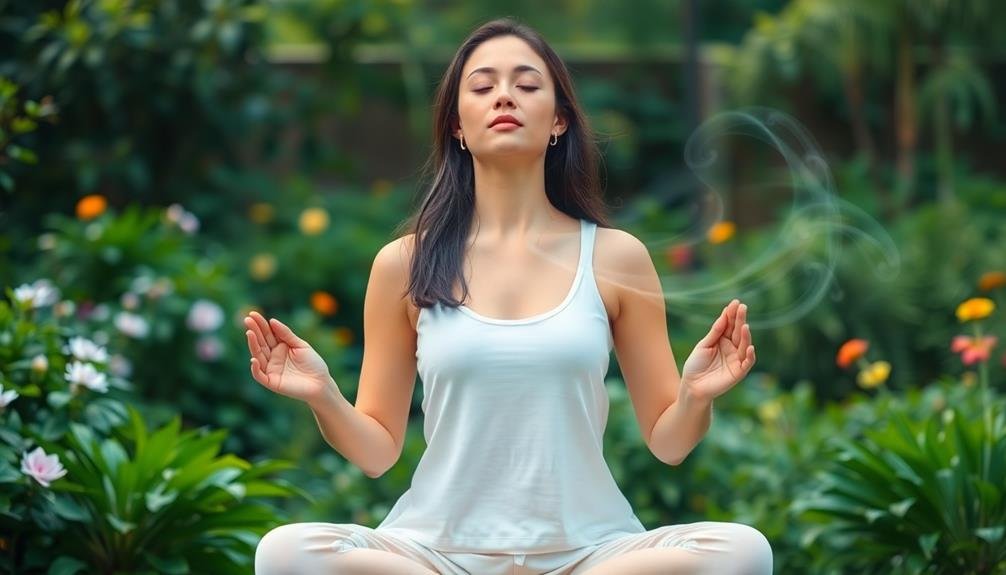
One of the most effective anxiety-busting techniques is the 4-7-8 breathing method. Developed by Dr. Andrew Weil, this simple yet powerful exercise can help you calm your mind and body in moments of stress.
To practice this technique, find a comfortable position and follow these steps:
First, exhale completely through your mouth, making a whoosh sound. Then, close your mouth and inhale quietly through your nose for a count of four. Hold your breath for a count of seven. Finally, exhale completely through your mouth, making a whoosh sound, for a count of eight. Repeat this cycle for a total of four breaths.
The 4-7-8 method works by increasing oxygen in your bloodstream, slowing your heart rate, and releasing tension in your body.
It's particularly effective because it forces you to focus on your breath, distracting you from anxious thoughts. You can use this technique anywhere, anytime you feel anxiety creeping in.
For best results, practice it twice daily, even when you're not feeling anxious. Over time, you'll find it easier to implement during stressful situations, providing quick relief from anxiety symptoms.
Box Breathing Technique

Another powerful anxiety-reducing method is the box breathing technique, also known as square breathing. This simple yet effective practice can help you calm your mind and body in stressful situations.
To perform box breathing, start by sitting comfortably with your back straight. Exhale completely, then inhale through your nose for a count of four. Hold your breath for another count of four. Exhale slowly through your mouth for four counts, then hold your breath again for four counts. Repeat this cycle for several minutes.
The box breathing technique works by regulating your breath and activating your parasympathetic nervous system, which helps counteract the fight-or-flight response. You'll find that it's particularly useful during high-stress moments, such as before a presentation or during a panic attack.
With practice, you can use this technique anywhere, anytime, without drawing attention to yourself. To maximize its benefits, try incorporating box breathing into your daily routine, perhaps during your morning or evening rituals.
As you become more proficient, you may find that you're able to extend each count to five or six seconds, further enhancing the calming effects.
Diaphragmatic Breathing for Relaxation

Beyond box breathing, diaphragmatic breathing offers a potent method for reducing anxiety and promoting relaxation. This technique focuses on engaging your diaphragm, the muscle at the base of your lungs, to create deep, full breaths.
To practice diaphragmatic breathing, find a comfortable position, either sitting or lying down. Place one hand on your chest and the other on your belly. Breathe in slowly through your nose, allowing your belly to expand while keeping your chest relatively still. You'll feel your hand on your stomach rise as you inhale.
Exhale slowly through pursed lips, feeling your belly fall. As you continue this practice, you'll activate your body's relaxation response, lowering your heart rate and blood pressure.
It's essential to maintain a slow, steady rhythm, aiming for 6-10 breaths per minute. Start with short sessions of 3-5 minutes and gradually increase the duration as you become more comfortable with the technique.
Diaphragmatic breathing can be particularly effective when you're feeling overwhelmed or stressed. By incorporating it into your daily routine, you'll develop a powerful tool for managing anxiety and promoting overall well-being.
Alternate Nostril Breathing Practice

From the ancient practice of yoga comes alternate nostril breathing, a powerful technique for calming the mind and balancing the nervous system. This practice involves breathing through one nostril at a time, alternating between the left and right.
To begin, sit comfortably and use your right thumb to close your right nostril. Inhale slowly through your left nostril, then close it with your ring finger. Release your thumb and exhale through your right nostril. Now, inhale through the right nostril, close it, and exhale through the left. This completes one cycle.
Continue this pattern for 5-10 minutes, focusing on your breath and maintaining a steady rhythm. You'll notice your mind becoming clearer and your body more relaxed as you practice.
Alternate nostril breathing helps reduce stress by balancing the sympathetic and parasympathetic nervous systems. It's been shown to lower heart rate, decrease blood pressure, and improve lung function.
This technique is particularly effective before stressful situations or when you're feeling overwhelmed. With regular practice, you'll find it easier to access a state of calm and balance whenever you need it.
Remember to breathe gently and never force your breath.
Counted Breath for Focus

While alternate nostril breathing offers a structured approach to calming the mind, counted breath techniques provide a simpler yet equally effective method for managing anxiety and improving focus. This technique involves counting your breaths to create a rhythmic pattern that helps steady your mind and body.
To practice counted breath, sit comfortably and close your eyes. Inhale slowly through your nose for a count of four, then hold your breath for a count of two. Exhale gently through your mouth for a count of six, and pause for another count of two before starting the next cycle.
As you breathe, focus on the numbers and the sensation of air moving in and out of your body. You can adjust the count to suit your comfort level, but maintain the ratio of 4:2:6:2.
Start with just a few minutes and gradually increase the duration as you become more comfortable with the practice. By concentrating on counting and breathing, you'll redirect your attention away from anxious thoughts, allowing your mind to settle and your body to relax.
Frequently Asked Questions
How Long Should I Practice These Breathing Techniques for Optimal Results?
You should practice breathing techniques for at least 5-10 minutes daily to see ideal results. Consistency is key, so try to incorporate them into your routine. You'll notice improvements in your anxiety levels with regular practice over time.
Can Children Use These Anxiety-Busting Breathing Methods Effectively?
Yes, children can effectively use anxiety-busting breathing methods. You'll find that kids often respond well to these techniques. They're simple to learn and practice, making them ideal for helping children manage stress and anxiety in various situations.
Are There Any Potential Side Effects of Practicing These Breathing Techniques Regularly?
You're unlikely to experience side effects from regular breathing techniques. They're generally safe, but if you have respiratory issues, consult a doctor first. Occasionally, you might feel lightheaded or dizzy if you're not used to deep breathing.
How Do I Know Which Breathing Technique Is Best for My Specific Situation?
You'll need to experiment to find what works best for you. Try different techniques in various situations and pay attention to how you feel. Your body's response will guide you to the most effective method for your needs.
Can These Breathing Exercises Be Combined With Other Relaxation Methods for Enhanced Benefits?
Yes, you can combine breathing exercises with other relaxation methods for enhanced benefits. Try pairing them with meditation, progressive muscle relaxation, or visualization techniques. You'll likely experience a more profound sense of calm and stress relief.
In Summary
You've now learned five powerful breathing techniques to combat anxiety. Remember, your breath is always with you, making it a readily available tool for stress relief. Practice these methods regularly to build your resilience. Whether you're facing a stressful situation or simply want to relax, you can turn to these techniques. They're simple, effective, and discreet. By incorporating them into your daily routine, you'll be better equipped to handle life's challenges with calm and composure.
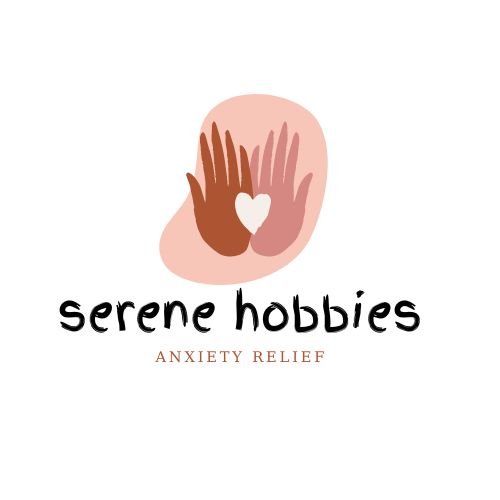

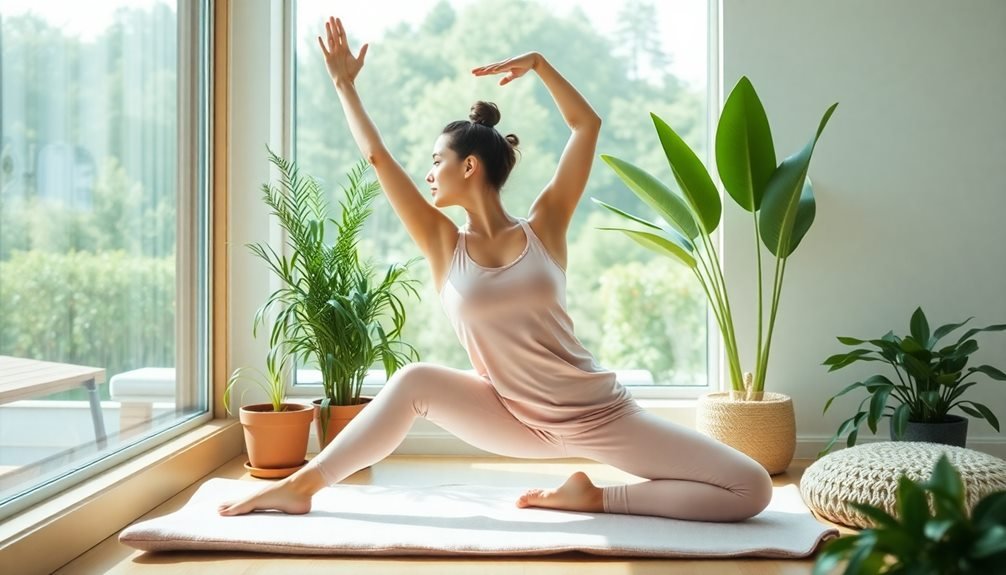
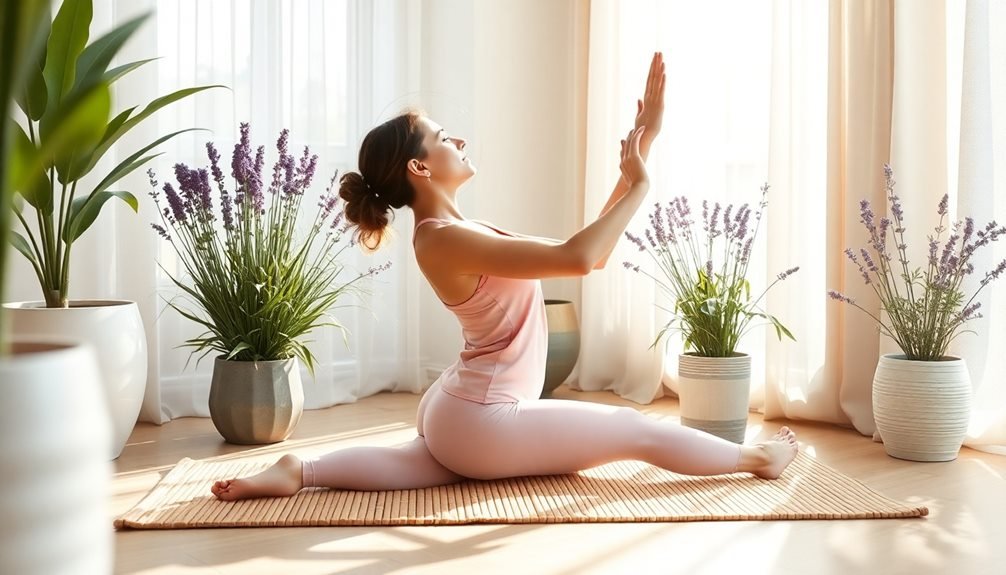
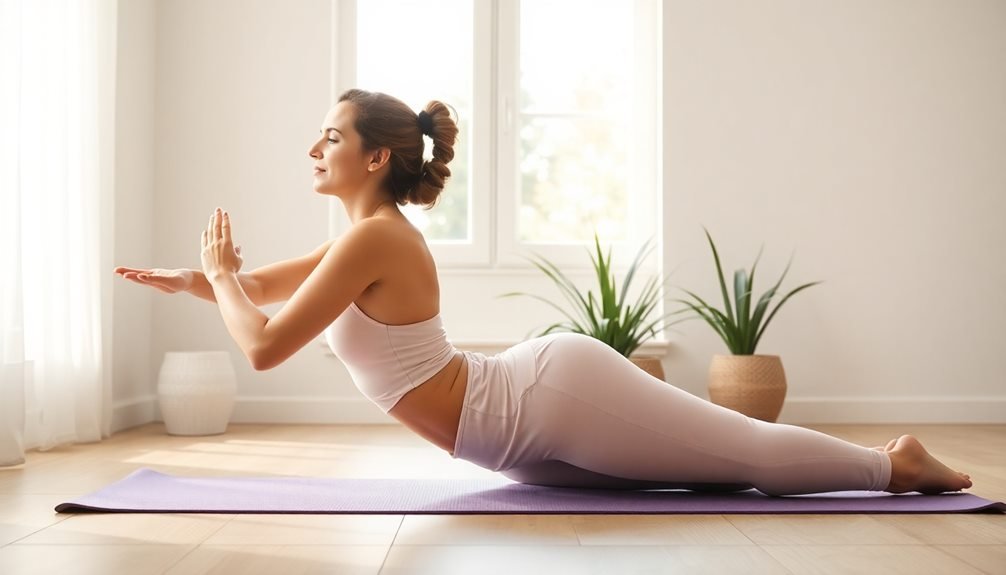
Leave a Reply